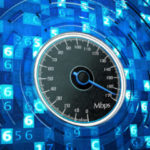Beacons. Augmented reality. Virtual site visits. The Internet of Things. With event technology evolving at a rapid pace, should planners wait to see how it all shakes out — or should they hop on board immediately? And if so, where?
Beacons are as good a place as any to start, suggests speaker and technologist Corbin Ball, CMP, CSP, DES, in “Meeting Technology,” the latest video for The Intersection, presented by PCMA and PSAV. A beacon, a small device that interacts with your phone or badge to send out location-sensitive information, “can be thought of as a digital lighthouse,” said Ball, that records room entrances and exits or connects like-minded attendees with each other. Beacons can record the amount of time each attendee spends in a booth, which Ball called “a goldmine of information,” for exhibitors.
Yet the incisive information that beacons can gather — as well as the annoying push notifications they sometimes send — have the potential to give beacons a lasting bad name, said Alistair Turner, managing director of the U.K.-based EIGHT PR & Marketing and co-creator of the Global Beacon Alliance. The GBA launched at IMEX this past spring as an industry effort to bring about “a tipping point” of beacon adoption. “There’s this sort of mistrust that exists between event technology and event organizers,” said Turner, one fueled in part by the poor early integration of Wi-Fi in some venues. “The more we spoke to people about this sort of thing, the more the clear message was that event technology needs to be owned by the event industry, not inflicted upon it.”
Beacons have tremendous potential, Turner said, and that potential will grow exponentially the more they are used. “They turn that phone in your pocket into this amazing information device that curates your whole experience,” Turner said, citing their use at the South by Southwest festival as a model. “It doesn’t just tell you what’s out there in the world, it tells you your place in that world as well. As event professionals, we can create standards around adoption. We can create guidance around adoption. We can showcase where [beacons are] brilliant. We can showcase where they’re poor, and where they don’t work. That way, we’re hoping that the industry can look at beacons with its eyes wide.”
Ball thinks planners needn’t be concerned that any of these flashy new technologies will take the place of — or take away from — face-to-face meetings. “The technology will not come as an ends in any way. It’s just a means of making a more efficient, better experience for attendees,” he said. “In the next 10 or 15 years, we will see some amazing things happening. It’s a very fun time to be alive.”
Corbin Ball’s Predictions for Event Technology
1.Wearables will change how attendees interact with exhibits, presenters, and each other over the next five years.
2.The Internet of things will bring location-based data analytics.
3.Mobile event apps will continue to evolve into increasingly interactive tools.
4.Because of the personalized content that technology is providing, attendees will soon demand more auto-personalized meeting content.
5.Get ready for virtual-reality site visits.
6. In 15 years, because of the isolation that some personalized technology brings, the importance of face-to-face meetings will be even more important.
Want to earn CEUs? Watch the Intersection video at www.pcma.org/theintersection.



